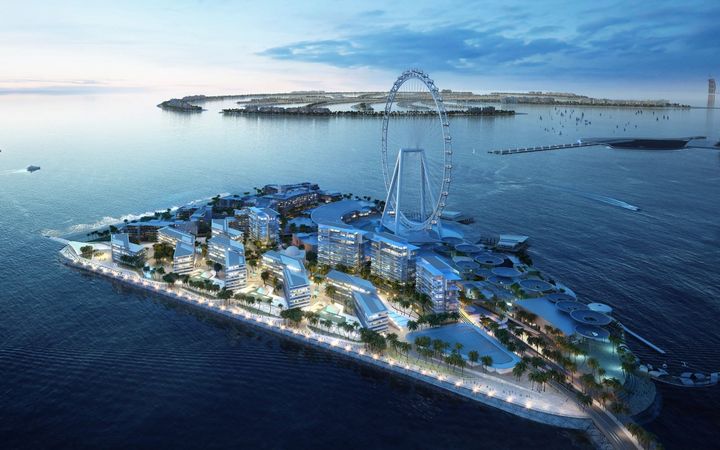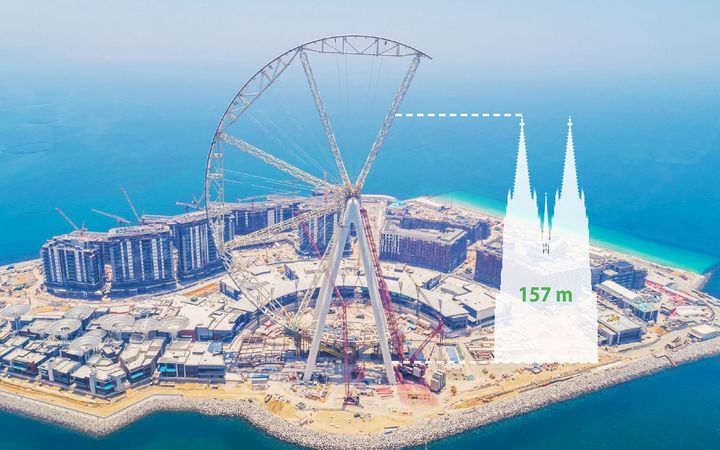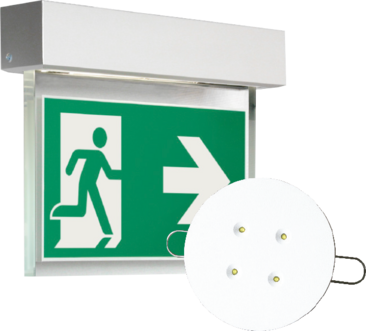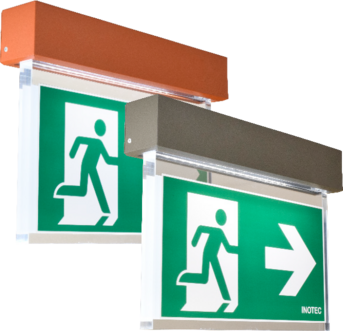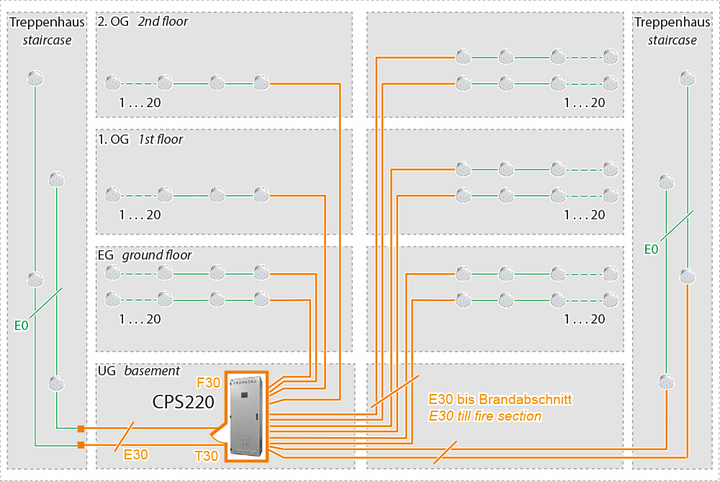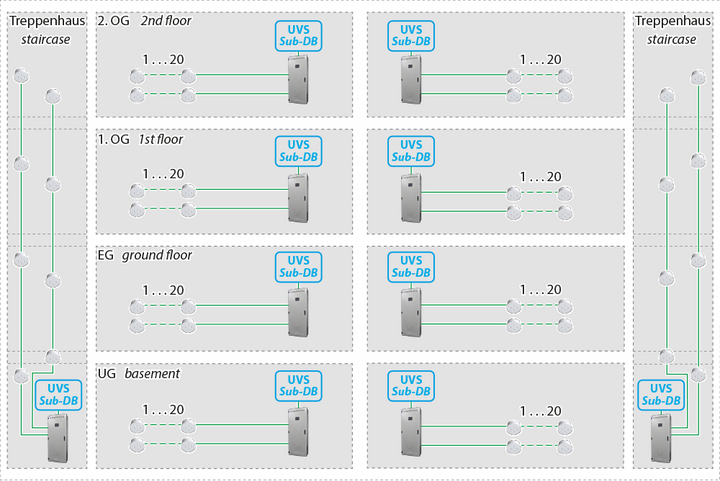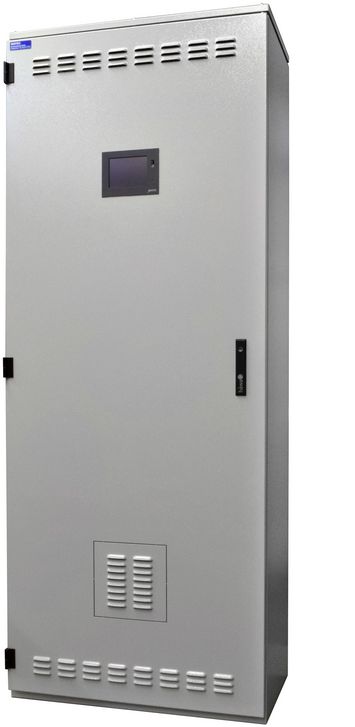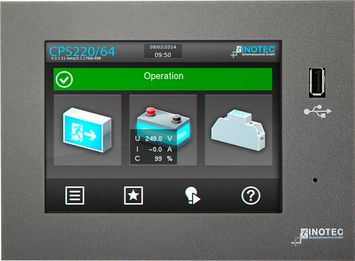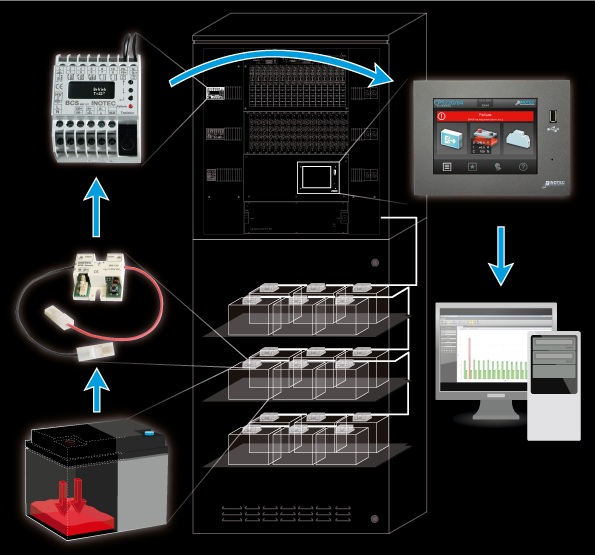New superlative project: Bluewaters Island
Multifunctional emergency lighting for Bluewaters Island
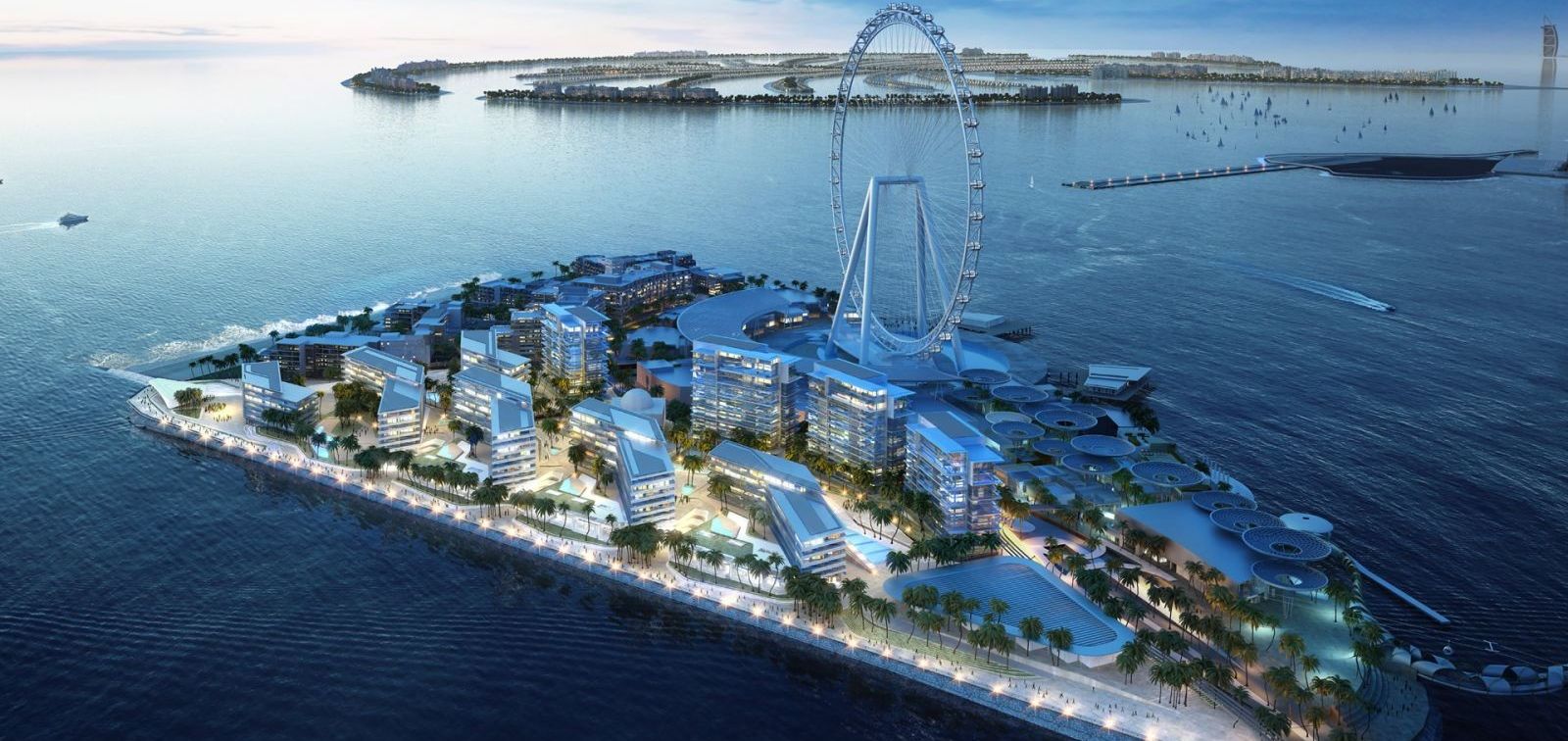
Burj Khalifa, Palm Jumeirah, Burj Al Arab – the United Arab Emirates are known for stunning projects and the dynamic expansion of their own tourist infrastructure. This results in attractions and sights with which dozens of world records have already been broken: the tallest building, the most luxurious hotel, the largest fountains and much more attract tourists from all over the world each year.
The pioneers of the seven emirates are Abu Dhabi and Dubai, where numerous large-scale projects have already been completed. In Dubai in particular, nothing seems to be impossible - the emirate was awarded the contract for the Expo 2020 with its motto “Connecting Minds, Creating the Future”, and will then be the first Arab country to host a world exhibition. Even now, Dubai presents itself as a modern metropolis, which offers visitors museums, theatres, amusement parks, and many more highlights.
New superlative project: Bluewaters Island
In addition to infrastructure projects, such as the development of the third-largest airport in the world in terms of passenger numbers, Dubai International, and the Dubai Metro, privately funded new hotels and resorts have mushroomed. Further projects are in the planning or implementation phase.
One of the most interesting tourist projects is “Bluewaters Island”, which is being created on an artificial island off Dubai Jumeirah Beach Residence. In addition to residential buildings, a shopping centre and luxury beach hotels and resorts, there is also the highest big wheel in the world at 210 metres, called “Ain Dubai” (“The Dubai Eye”). During the ride, guests can enjoy stunning views of the Dubai Marina and spectacular sights such as the Burj Khalifa and the Burj Al Arab. The big wheel has 48 luxuriously appointed gondolas and can accommodate 1,400 people, giving it the potential to become the biggest tourist attraction of the Emirates and a symbol of the pioneering and innovative achievements of Dubai.
INOTEC in action for Bluewaters Island
A record-breaking project like Bluewaters Island naturally needs similarly record-breaking emergency lighting. Consequently, the decision was made in favour of INOTEC. In the course of the planning support by the local agent Sibca Electronic Equipment Est. and INOTEC Middle East / Inosafe Lighting LLC, based in Dubai, the customer’s existing specifications were taken into account. On account of their durability, fail-safe characteristics and low energy consumption, LED lamps have meanwhile become the illuminants of choice in many projects. Installations on Bluewaters Island were no exception here either. And of course the use of LED for emergency exit luminaires, which are in operation round the clock, is sensible on account of the reduced energy costs.
Emergency lighting for the Middle East
In order to meet the different technical standards and structural conditions, INOTEC employs different concepts and luminaires in the Middle East. In principle, a distinction is made between the centralised power supply of all emergency and safety lights installed in the property from one battery system (Fig. 1) and the decentralised version from several battery systems (Fig. 2). Both concepts make use of the same systems. The differences lie in the size and capacity of each system, which is adapted to meet the relevant requirements.
The choice of concept, of course, also has an impact on the wiring as well as on the facilities needed for accommodating the system and the battery. With the most frequently required emergency lighting time of three hours, the appropriate volume of the battery compartment must be planned at an early stage. While one battery compartment is sufficient for a centralised emergency lighting system, decentralised/centralised projects require several, albeit smaller, battery compartments. The cable routing also differs, as the comparison between Fig. 1 and Fig. 2 shows.
This does not affect the choice of luminaire. However, practical aspects (IP class, material, type of installation, illuminants) and aesthetic aspects (appearance, form, colour) naturally play a major role in the selection. Furthermore, safety luminaires are also subject to the lighting requirements, which vary both within the Emirates and within individual projects. The lighting level can range from 1 lux through 10.8 lux to even higher values for rooms with special hazards.
Functionality and safety in Dubai
Both system concepts were implemented on Bluewaters Island. Systems with 22 KW (Fig. 4) as well as smaller units were used. What they all have in common is a controller with a graphical user interface. (System image/Fig. 4, drag a corner of the TFT controller to make it bigger)
Many elements and functions of an emergency lighting system have become the standard for INOTEC safety technology. For example, in addition to a 4-line controller, touch controllers are already being used in many projects. The testing and display of all necessary elements are implemented in both controllers. In addition to a graphical user interface that makes orientation and programming easier, the TFT touch controller offers further functions that are integrated in the software. For example, each TFT controller has an integrated network interface and works like a mini-web server. Integrated protocols (e.g. TCP/IP or ModBus) allow easy connection to the building services management system as well as monitoring of the systems in a centralised location. The user can access the INOWEB function of the TFT controller using a web browser, and can view the device status, including every circuit and every single connected emergency / safety luminaire, at any time. Optionally, of course, the INOVIEW software can also be used. This allows the status of the emergency and safety lighting to be monitored from different locations, even outside the building.
Improvement in efficiency thanks to additional functions
In order to increase safety and reliability further, additional functions were integrated. The battery monitoring system BCS, which was developed by INOTEC, was used in all systems in different buildings on Bluewaters Island. Standard emergency lighting systems check the battery line and all battery blocks as one unit. The failure of an individual block is not adequately covered. The characteristic feature of the BCS system is that it monitors each individual battery block. Sensors on each battery block record the temperature and voltage and compare these values with the specified setpoint values.
Depending on the level of risk, discrepancies cause a message to be displayed or lead to the charging process being shut down. This prevents the battery from being destroyed, and the expected life cycle of the battery is improved (Fig. 6). Since the recording of these values takes place at very short intervals and the values obtained are stored in the controller, an evaluation with respect to the end of the battery’s life cycle is possible. This allows the planning of maintenance and repair of the system to be improved.
Individual battery block monitoring with BCS system:
- Every battery block is monitored individually.
- Sensors of the BCS system record voltage and temperature of each battery block.
- The BCS module collects and documents the battery block data.
- Once limiting values are exceeded/undercut, the control unit reports a failure.
- Long-term developments of the battery blocks can be evaluated in BCS View.
The solution: safe, durable and cost-effective
INOTEC has found safe, durable and cost-effective solutions for Bluewaters Island: thanks to high-quality materials and technologies, long-term cost reductions in maintenance and servicing are achieved in many areas.
Through the selection of low-consumption, energy-saving and fully monitored LED luminaires, the costs for lamp replacement and energy are reduced to a very low level. The use of 10-year batteries in these systems and the further optimisation of the battery management system will also significantly reduce your maintenance costs. This means that the specifications and requirements of a modern, safe, durable, efficient and thus also sustainable emergency lighting installation are met.
Bluewaters Island is thus well equipped for the tourists of the years to come.
